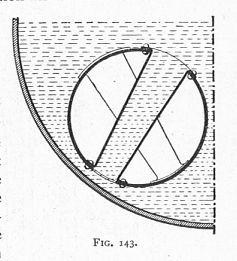Thermic Syphon on:
[Wikipedia]
[Google]
[Amazon]

 Thermic siphons (alt. thermic syphons) are heat-exchanging elements in the
Thermic siphons (alt. thermic syphons) are heat-exchanging elements in the
Thermic siphons
/ref> The Nicholson form combined a complex shape that provided more heating area in a given space than did the earlier tubes and funnels, yet was simple to make, being folded from a single sheet of steel.
 The first high-pressure boilers were a large drum with a central flue, such as the Cornish and
The first high-pressure boilers were a large drum with a central flue, such as the Cornish and
Photo of lower tube-sections of thermic siphons on Battle of Britain class no. 34059 ''Sir Archibald Sinclair''
{{Boilers Boilers Locomotive parts

 Thermic siphons (alt. thermic syphons) are heat-exchanging elements in the
Thermic siphons (alt. thermic syphons) are heat-exchanging elements in the firebox
Firebox may refer to:
*Firebox (steam engine), the area where the fuel is burned in a steam engine
*Firebox (architecture), the part of a fireplace where fuel is combusted
*Firebox Records
Firebox Records was a Finnish record label based in S ...
or combustion chamber
A combustion chamber is part of an internal combustion engine in which the fuel/air mix is burned. For steam engines, the term has also been used for an extension of the firebox which is used to allow a more complete combustion process.
Interna ...
of some steam boiler
Steam is a substance containing water in the gas phase, and sometimes also an aerosol of liquid water droplets, or air. This may occur due to evaporation or due to boiling, where heat is applied until water reaches the enthalpy of vaporization. ...
and steam locomotive
A steam locomotive is a locomotive that provides the force to move itself and other vehicles by means of the expansion of steam. It is fuelled by burning combustible material (usually coal, oil or, rarely, wood) to heat water in the locomot ...
designs. As they are directly exposed to the radiant heat
Thermal radiation is electromagnetic radiation generated by the thermal motion of particles in matter. Thermal radiation is generated when heat from the movement of charges in the material (electrons and protons in common forms of matter) is ...
of combustion, they have a high evaporative capacity relative to their size. By arranging them near-vertically, they also have good water circulation by means of the thermosyphon
Thermosiphon (or thermosyphon) is a method of passive heat exchange, based on natural convection, which circulates a fluid without the necessity of a mechanical pump. Thermosiphoning is used for circulation of liquids and volatile gases in heat ...
effect.
History
The concept of a self-circulating thermic syphon began with stationary boilers and relatively simpleGalloway tube
W & J Galloway and Sons was a British manufacturer of steam engines and boilers based in Manchester, England. The firm was established in 1835 as a partnership of two brothers, William and John Galloway. The partnership expanded to encompass t ...
s. They reached their peak in steam locomotive boiler
A fire-tube boiler is a type of boiler in which hot gases pass from a fire through one or more tubes running through a sealed container of water. The heat of the gases is transferred through the walls of the tubes by thermal conduction, heating t ...
s, where the complexity of a syphon was justified by the need for a compact and lightweight means of increasing boiler capacity. One of the best-known forms for locomotives was invented by the English locomotive engineer who received a US patent./ref> The Nicholson form combined a complex shape that provided more heating area in a given space than did the earlier tubes and funnels, yet was simple to make, being folded from a single sheet of steel.
Flued boilers
 The first high-pressure boilers were a large drum with a central flue, such as the Cornish and
The first high-pressure boilers were a large drum with a central flue, such as the Cornish and Lancashire boiler
A shell or flued boiler is an early and relatively simple form of boiler used to make steam, usually for the purpose of driving a steam engine. The design marked a transitional stage in boiler development, between the early haystack boilers and t ...
s. Simple tubes were inserted across this flue.
See also
*Thermosiphon
Thermosiphon (or thermosyphon) is a method of passive heat exchange, based on natural convection, which circulates a fluid without the necessity of a mechanical pump. Thermosiphoning is used for circulation of liquids and volatile gases in heat ...
References
External links
Photo of lower tube-sections of thermic siphons on Battle of Britain class no. 34059 ''Sir Archibald Sinclair''
{{Boilers Boilers Locomotive parts